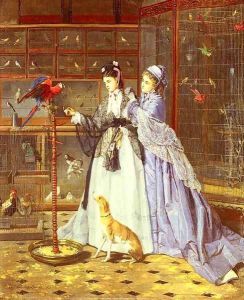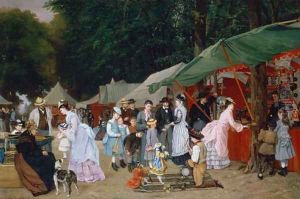Camille-Leopold Cabaillot-Lasalle Paintings
Camille-Léopold Cabaillot, better known as Cabaillot-Lassalle, was a French sculptor born on March 30, 1839, in Paris, France. He was primarily known for his sculptural work in the academic and neoclassical styles, which were prevalent in the 19th century. His works were often characterized by their detailed craftsmanship, and classical themes and figures, drawing inspiration from ancient Greek and Roman art as well as the Renaissance.
Cabaillot-Lassalle trained at the École des Beaux-Arts in Paris, which was the foremost institution for arts education in France at the time. He studied under prominent sculptors such as Francisque Duret and Jean-Baptiste Carpeaux, whose influence can be seen in his attention to form and the dynamic expression of his figures. He began to exhibit his work at the Paris Salon, an official art exhibition of the Académie des Beaux-Arts, which was a crucial venue for artists to gain recognition.
During his career, Cabaillot-Lassalle created a variety of works ranging from portrait busts to full-scale statues. He was adept at capturing both the physical likeness and the spirit of his subjects, which earned him several commissions for public monuments. His sculptures adorned various public spaces and institutions, reflecting the taste and cultural ambitions of the Third French Republic.
Despite his talent, Cabaillot-Lassalle's career was relatively short-lived. He died on January 13, 1881, in his early forties. While his work may not be as widely recognized as that of some of his contemporaries, it represents a significant contribution to the rich tapestry of 19th-century French sculpture. His works remain a testament to the skill and artistic values of the period, embodying the academic rigor and neoclassical elegance that were celebrated during his lifetime.



